- Home
- Thomas Keneally
Australians, Volume 3 Page 9
Australians, Volume 3 Read online
Page 9
Between 1907 and 1910, many once-unemployed labourers and former public servants were settled on wheat-growing blocks in the area of Yorkrakine, east of Perth. They were supported by the Agricultural Bank, founded by Sir John Forrest in 1895 to help wheat farmers establish their farms. The bank would even advance mortgage money, because it knew its clients intimately. The first head of the bank was a Pinjarra landowner named William Paterson, native-born, formed by the experience of having run a cattle station in the Kimberley, who now travelled round on horseback visiting his customers. He wore himself out trying to service their various needs, was beloved throughout the countryside and much mourned when he died in 1920. The new managing trustee was E.A. McLarty, of similar character, who came from a pioneering Pinjarra family, and again was not a professional economist or financier.
The Agricultural Bank had also been kind to soldier settlers after World War I; because of this, soldier settlement in Western Australia was probably more successful than elsewhere, even though neither gold nor timber looked as promising as they had earlier, and so government felt unable to extend as much capital to the wheat farmers as it had before. Nonetheless, the acreage under wheat trebled in the 1920s, and fed Premier Mitchell’s optimism. A farmer’s son himself, he positively asserted the great (though perhaps flawed) dictum that there are no bad seasons, only some with more rainfall than others.
Under the Labor man Philip Collier’s government, from 1924 to 1930, support for the wheat industry continued. Collier was a T’othersider from Victoria but was forgiven his damnable origins for his charm, literary bent, hatred of Communism, and generosity of spirit. Under him, state aid to farmers increased. Light narrow-gauge railways were pushed into country districts, and the interest bill on British capital borrowed for railway construction mounted. So the Collier government put more and more emphasis on the much-fancied Western Australian wheat. The gold industry was not as significant as in the past. The mines employed an increasing number of southern Europeans. It was not politically popular to spend public money for their benefit. Agricultural investment attracted government funds, and the first group settlement for unemployed miners was opened near Manjimup in March 1921.
Mitchell and Collier were subscribers to the same enduring Australian myth—the myth of the holiness of the bush and farmers—that had influenced earlier Australian politicians. The belief in sturdy pioneer farmers would in the end contribute to the troubles of the 1930s, but in the meantime Mitchell and then Collier favoured immigration and were adherents to the principle of group settlement, placing all arriving immigrants from the same convoy of steamers on farms located in the same region. The Queensland government had sponsored similar agricultural settlements in the 1890s. One Western Australian immigrant farmer liked it because ‘it’s as near socialism as you can get in a capitalistic system of society’. But when the whole set of schemes ran into difficulties during the 1930s, it would be attacked as a foredoomed form of state Communism.
Under the group settlement plan, immigrants would, on arrival, be selected in groups of twenty or thirty families to form a community. Six or seven members of the group were sent in advance to erect slab and iron huts, which in time would be replaced by cottages. The British press baron Lord Northcliffe’s Daily Mail and Evening News praised Mitchell and Western Australia, for group settlement was one of Northcliffe’s passions too, and he would spend money on a scheme near the Western Australian town that would bear his name. Yet the 1923 plan to settle six thousand suitable immigrant families on group settlements had flaws. Too many migrants were sent out too quickly. Some were settled on places like the Peel Estate south of Fremantle—swampy, poorly drained, the soil leached of all nutriment. Most of the farmers sent to that area failed. In other areas of the south-west, the settler on timbered land was required to clear some of the hardest wood trees on earth—the jarrah, the karri, the tuart—invaluable and cherished timber which, once cut down, lay where it fell, for there was no means to lift and move the enormous trees. Again, the overworked immigrant farmer, often enough a former British city-dweller, found that the timberlands did not always provide the wonderful pasture and agricultural land they had been promised. One man from the West Country in Britain declared, ‘Some weeks we were working in water up to our knees slashing down Scrubb, Mullocking Roots out, best we Could, Cold Soaked into the Skin, go back at Night to our Old Shack, all waterlogged, cold, shivering.’ There were foremen on these settlements who decided where people would live, and as anxiety mounted, so did feelings that the foremen did more favours for some than for others.
The Group Settlement Board oversaw all the schemes but had to be informed of all livestock sales and purchases and any substantial change to the farm. They had power to evict the failing farmer, but came up against farmer solidarity. In 1925, a field supervisor from the Board discovered that whenever a settler was evicted from his holding for inefficiencies, the other ‘groupies’ threatened the evictors and ostracised any newcomer who took up the block.
Helen Woolmer, the wife of a British World War I veteran who had found it impossible to get work in post-war London, arrived with her husband in 1924. After they left the quarantine station at Albany they were sent to Northcliffe. They lived in a tin shack until land was cleared and cottages erected. Many cottages had to be shared. There were no toilets and the only water was from the creek. Women and children lay on the bare earth floor covered with sacks while the men slept out in the bush. No roads, only a bush track, led into Northcliffe. There were no doctors or hospitals, no beds or blankets, no milk and no fruit. The settlers dug rough latrines but the children became ill with dysentery. The foreman told Helen Woolmer to feed hard lumps of red gum to her baby daughter and son. Then ‘barcoo rot’ began, a dietary disease that covered the children with sores. Woolmer also found that the family hut had been built over a stream that flooded in rain, and the shack had to be dismantled, taken some distance off and re-erected. Her husband was ill for four months, and though there was a sickness benefit fund to which all the settlers contributed, there had been so much sickness that it was now used up and ‘we were at starvation point, except for odds and ends donated by the [other] settlers’. She appealed to the Red Cross in Perth, and in the subsequent terrible months, she said, the Red Cross saved them with money and pharmaceuticals.
The typical immigrant woman in the bush, observer Frank Larter said, longed for simple British things such as the ringing of church bells, the cries of fishmongers and coal men, of cat-meat sellers and milk vendors, and the bells of the muffin and crumpet man. The men missed the warm local pubs, the factory sirens, the music halls and the football clubs. They even reminisced about the war with a kind of longing, since there had been greater hope then.
Mrs Reg Goldsmith and her family also arrived in Western Australia in 1924, and after a hard start at Kendenup, during which they lived on a diet of wheat and carrots, found group settlement excellent. In Group 21 at Jardee, to which the Goldsmiths moved, the range of foodstuffs had expanded and social life was very strong. There was even a government hospital nearby, and cows and poultry were available, as well as apples and pears from the local orchard. This was a golden interlude, since the Goldsmith wheat farm failed in the Depression.
The scheme was temporarily suspended in 1924, and holdings were amalgamated as more and more settlers gave up under the economic hardship of their lives. But the government was still locked into financing the scheme, even though by 1929, Mitchell, on his way to returning to power, was beginning to question the cost of it all. ‘We are drifting along,’ he said, ‘making some progress, but so little for the money we are borrowing.’
A Loan Council was founded by Prime Minister Bruce after the proposal to create one was passed at the 1928 referendum to enable it. Under it, the public debts of the Commonwealth and the states were amalgamated, and the Commonwealth agreed to help states in difficulty with loan repayment. All states would contribute an agreed sum towards interest paym
ents and to a sinking fund. Individual states could, however, no longer levy loans from overseas investors except by way of the Loan Council.
This was an arrangement that cut into Western Australia’s pride in innovation and its belief in its especial needs and destiny. In the coming crisis it would seem to many Western Australians one reason amongst many to separate from the Commonwealth.
CHAPTER 2
The Great Crash and Fascism’s rise
Happy valleys and flirtations with extremes
THE VILLAIN OF THREADNEEDLE STREET
After the nosedive of stocks on Wall Street in 1929, credit was almost impossible to get, goods did not sell, and workers were sacked in considerable numbers, leading to a climax of Australian neediness in 1932, when unemployment reached 32 per cent. But even before the ‘Great Crash’, as people would call it, there was over 10 per cent unemployment in Australia, the ultimate outfall from sinking prices for wool, wheat and minerals. In early 1930, at the height of the Australian summer, Labor Prime Minister James Scullin knew that he was facing ‘a financial depression without parallel in the thirty years’ life of the Commonwealth’. Unemployment was already at 13.1 per cent and increased to 14.6 per cent by midyear. There were clashes in Sydney between the police and those out of work, ‘led by Communists’, as the Sydney Morning Herald of 27 February 1930 said. Many wage cuts occurred, some accepted without protest. In Queensland the shearing rate per hundred was reduced by five shillings to forty shillings. But the coal miners would not accept lower wages, and went on strike.
Under Bruce, roads and grain elevators had been built, but much of that was due to pressure from the Country Party rather than agreement with English economist John Maynard Keynes, whose economic theories US President Roosevelt would put into operation in the New Deal to help mute the impact of the Depression in the United States during the 1930s. Scullin, elected to solve the unemployment problem, and unwilling to visit remoter towns and cities by the chancy medium of aircraft, began using the radio to reach and reassure people. His talks were rather formal, and concerned with economic concepts and information on the short-term loan situation in London, topics that many of his listeners may have had trouble grasping. It was a short-term lack of jobs that riveted people’s attention. But one of Scullin’s plans was to try to prove Australia’s economic buoyancy by sending London the largest repayments on World War I and 1920s borrowings that federal and state governments could manage, and to do this as a means to encourage investment in Australia. It would be a hard act to pull off, and Jack Lang, Labor premier of the largest state, New South Wales, simply did not believe in Scullin’s repayment plans.
Scullin’s treasurer, the Queenslander Ted Theodore, saw ‘big spending’ on national projects as the answer. Scullin was sympathetic. On his journeys to and from Canberra, he looked out of the train and saw beggars in the streets of Sydney, harrowed-looking men tramping along roads. It was all complicated by the fact that the number of old-age and invalid pensioners rose by a larger number of people in 1930 than in any previous year because those who had until now been supported by relatives had to find other means of support when their family members lost their jobs. The good omen was that it would be a year of high wheat and wool production.
Sir Granville Ryrie, Australian financial representative in London, and Treasurer Theodore made a statement to the British money market declaring that Australia would not postpone its interest payments and pointing out that the Commonwealth had never failed to meet its obligations. This caused a temporary rallying of Australian stock prices in London.
Perhaps the most significant of Scullin’s radio appeals to the populace was made on the evening of 4 March 1930, when he launched his ‘Grow More Wheat’ campaign. He said that Australians needed to increase their production of exportable goods. The industry that could best do this was the wheat-growing industry. To growers who performed this ‘urgent national service’, he offered prospects of an increase in their prosperity, supported by government-guaranteed prices, and assurances of businesslike marketing through a wheat pool. By contrast, the Americans intended to reduce their sowings of wheat by 10 per cent as a means of maintaining the price. But Australia should look after the problem by simply producing more. In answering his call, wheat growers were taking a risk—what if their wheat wasn’t bought after all? Some amongst them drove to town, asked banks for money to expand their crops, and found they did indeed suffer a loss, even under the government guarantee. Though Scullin had never intended this result, it was a failed policy for which the country intended to punish him.
When the Depression started, the government-owned Commonwealth Bank acquired all the trading banks’ gold reserves as the first step in meeting the demands of the time. It found that the gold reserves were not enough, however, to make up for the disastrous falling off in exported goods. There were two sources of finance left—the depleted British sterling reserves Australia had earned from the sale of Australian exports to Britain, and the receipts of the Australian trading banks. During January 1930, Scullin had initiated negotiations for an issue of £5 million Australian bonds to be sold in Britain and elsewhere, but the bond market had imploded too, and in any case it did not want to buy Australian bonds.
In the first third of the century, from 1900 to the Depression, the population had grown from 3.7 million to 6.5 million. There were far more people to feel the misery than there had been in the 1890s depression. As the catastrophe of 1929 extended its misery into 1930 and thereafter, some moralists took a dour satisfaction from these events. Younger Australian families of the 1920s had spent so much on consumer goods, they fulminated, from motor cars to player pianos to gramophones and refrigerators, that it was merely appropriate they should now see many of their treasures carried off by bailiffs. Lower wages would bring the economy back into balance, some experts believed, without thinking of the fact that lower wages meant fewer people to buy the motor cars, player pianos, gramophones and cabinet radios. If the manufacturers could not sell enough of those goods, they would have to sack still more of their employees.
It struck many Australians powerfully now that in the Soviet Union every adult who wanted to work had a job. This hopeful view of Stalin’s horrific Soviet Republics went uninformed by knowledge of the famine of the early 1920s or, during the 1930s, starvation in the Ukraine and elsewhere, which would lead to a combined loss—by Stalin’s own admission—of ten million. In any case, the demand, whether from Communists, socialists or simply desperate men and women, was for the justice of a job. The appeal, uttered in parks, on the streets, or even from within the steel-mesh cages inside which the radical orators of the Domain in Sydney locked themselves as a means of defying arrest, increased in the establishment a belief that atheistic Communism was finding its voice on Australia’s streets. For even a noted clergyman, the Reverend W.C. Chandler of Lithgow, a town now full of unemployed miners, declared that ‘the present order of society has been tried and found wanting, and it must be replaced by evolution or revolution’.
As the Depression progressed it did indeed seem that the order of things was breaking down. The New South Wales Government Savings Bank closed down in 1931 after crowds of people gathered in Martin Place, Sydney, to withdraw their money. Since its closure seemed indefinite, many of its clients were forced to sell off their deposit books to speculators for half the value of what they had actually deposited in the bank. People now stormed the Commonwealth Bank in Castlereagh Street, and the bank governor had to stand on top of the counter and tell them there was no need to extract their money since the Commonwealth of Australia guaranteed their deposits. The Commonwealth Bank eventually amalgamated with the state savings banks to cover further panics, but banks generally were in such bad odour for rebuffing depositors who tried to withdraw their deposits that it was common for people to throw bricks through their windows.
Despite the reassurances, there was a chance now that the Commonwealth Bank would collapse, because it held
less and less export money. The bank pointed out to the amiable and hapless Scullin government that, considering all possible sources of funds, there would not be enough to fulfil the government’s obligations to pay wages to public servants and the interest on its considerable overseas debts up to 30 June 1930. Out of its own reserves, the bank was able to finance only until 31 March 1930 those governments that banked with it, that is, the federal, South Australian and Tasmanian governments. (The other states had done their raising of funds through the Westminster Bank and the Bank of England, and would be faced with similar problems.) The Commonwealth Bank suggested that the British government be approached to postpone the half-yearly interest payment of £2.77 million due on Australia’s world war debt on 31 March.
Britain itself was under pressure now to repay US banks the war loans it had taken out in America. The Westminster Bank was already alarmed at having to provide ‘substantial accommodation’ of repayments, as well as reluctantly lending the Australian states £9.75 million at the beginning of February. It said it could no longer agree to increases in overdrafts asked for by the suddenly hard-up New South Wales, Victorian and Western Australian governments, who were in the hopeless situation of trying to borrow money to meet their repayments.
Early in February 1930, Treasurer Theodore told a meeting of the Commonwealth Bank and the trading banks that £13 million would be needed before 30 June. The banks must help out all governments who defaulted, he said, because Australia could not depend on British bankers to help. The Australian trading banks refused. So now the Commonwealth Bank approached the British Chancellor of the Exchequer himself to arrange temporary deferment of the March war-debt payment. The chancellor referred the matter to the governor of the Bank of England, the institution whose nickname was ‘the old lady of Threadneedle Street’. The Bank of England’s financial controller, Sir Otto Niemeyer, asked for more information about the debtor, the Commonwealth of Australia, about the total value of the 1929–30 wool and wheat exports, and how much of both had been sold. Niemeyer had been Controller of Finance at the British Treasury and a member of the Financial Committee of the League of Nations before transferring to the Bank of England in 1927. If he was satisfied that everything was being done in Australia to meet the emergency, Niemeyer—depicted in Australia as a slim and bloodless automaton—could be prepared to help find the £25 million that would meet government commitments for nearly a year, up to 31 January 1931, and would recommend postponement of the war-debt payment. But when the Scullin government’s answer came, Niemeyer declared himself unsatisfied with it. He was not comfortable dealing with a Labor government anyhow, and was alarmed by the fact that many members of the Labor Party were in favour of political control over the printing and issuing of banknotes and wanted Scullin to order such a printing. Niemeyer was already particularly concerned in any case about Australia’s attitude to the gold standard, by which the value of paper money was underpinned by holdings of gold. She had exported a considerable proportion of gold reserves to pay debts, yet had made no attempt to reduce her banknote issue. Someone must go and straighten out the Australians and remind them of their obligations!

 Confederates
Confederates Flying Hero Class
Flying Hero Class Gossip From the Forest
Gossip From the Forest Schindler's List
Schindler's List Bring Larks and Heroes
Bring Larks and Heroes Australians: Flappers to Vietnam
Australians: Flappers to Vietnam The People's Train
The People's Train Crimes of the Father
Crimes of the Father A Family Madness
A Family Madness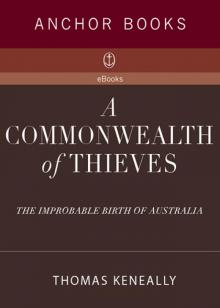 A Commonwealth of Thieves
A Commonwealth of Thieves Ned Kelly and the City of Bees
Ned Kelly and the City of Bees A River Town
A River Town Bettany's Book
Bettany's Book Blood Red, Sister Rose: A Novel of the Maid of Orleans
Blood Red, Sister Rose: A Novel of the Maid of Orleans Victim of the Aurora
Victim of the Aurora American Scoundrel American Scoundrel American Scoundrel
American Scoundrel American Scoundrel American Scoundrel Three Cheers for the Paraclete
Three Cheers for the Paraclete Australians: Origins to Eureka: 1
Australians: Origins to Eureka: 1 The Power Game
The Power Game The Chant Of Jimmie Blacksmith
The Chant Of Jimmie Blacksmith The Daughters of Mars
The Daughters of Mars Searching for Schindler
Searching for Schindler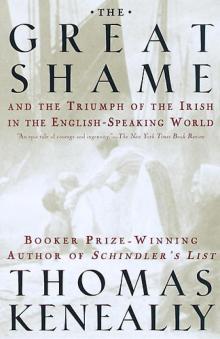 The Great Shame: And the Triumph of the Irish in the English-Speaking World
The Great Shame: And the Triumph of the Irish in the English-Speaking World Abraham Lincoln
Abraham Lincoln The Widow and Her Hero
The Widow and Her Hero Eureka to the Diggers
Eureka to the Diggers Shame and the Captives
Shame and the Captives The Survivor
The Survivor Jacko: The Great Intruder
Jacko: The Great Intruder The Book of Science and Antiquities
The Book of Science and Antiquities Homebush Boy
Homebush Boy The Playmaker
The Playmaker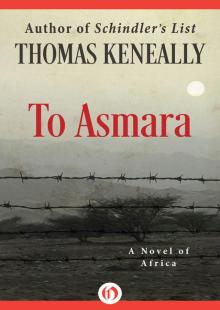 To Asmara: A Novel of Africa
To Asmara: A Novel of Africa A Woman of the Inner Sea
A Woman of the Inner Sea The Tyrant's Novel
The Tyrant's Novel Australians
Australians Schindler's Ark
Schindler's Ark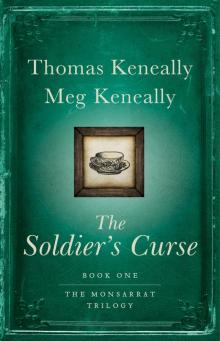 The Soldier's Curse
The Soldier's Curse Australians, Volume 3
Australians, Volume 3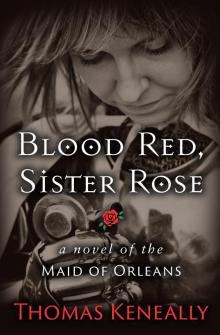 Blood Red, Sister Rose
Blood Red, Sister Rose A Victim of the Aurora
A Victim of the Aurora The Unmourned
The Unmourned Australians, Volume 2
Australians, Volume 2 To Asmara
To Asmara